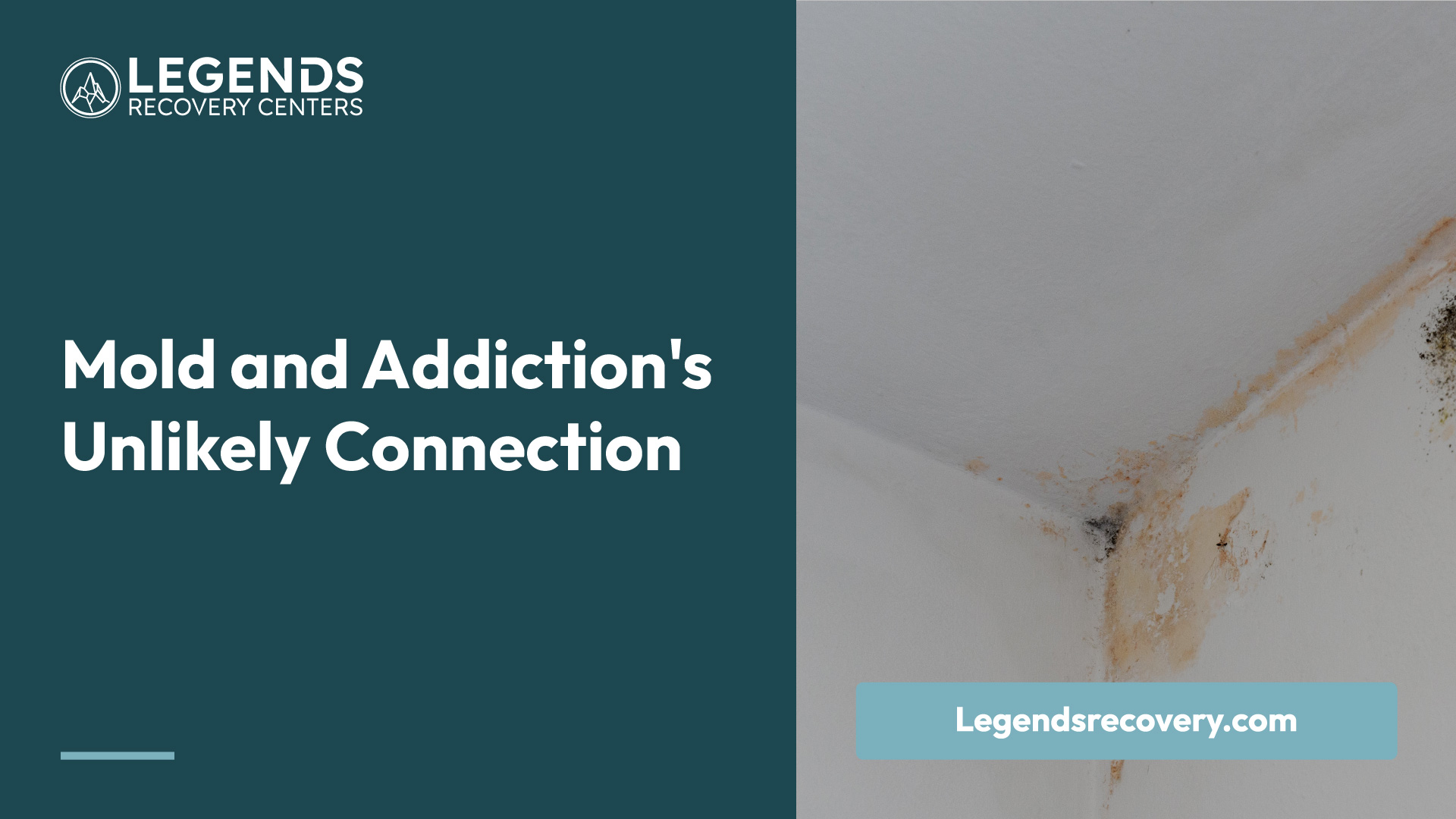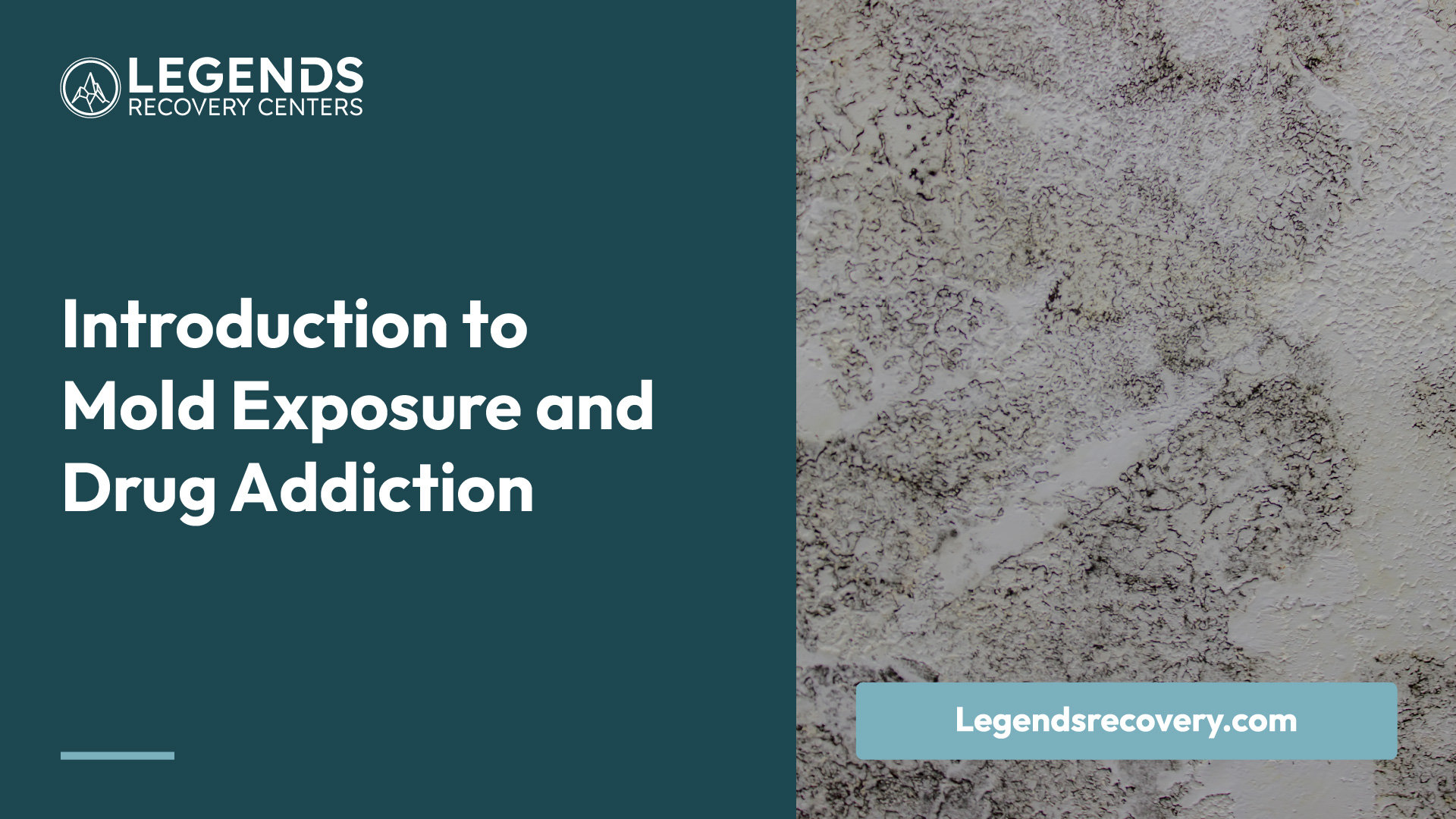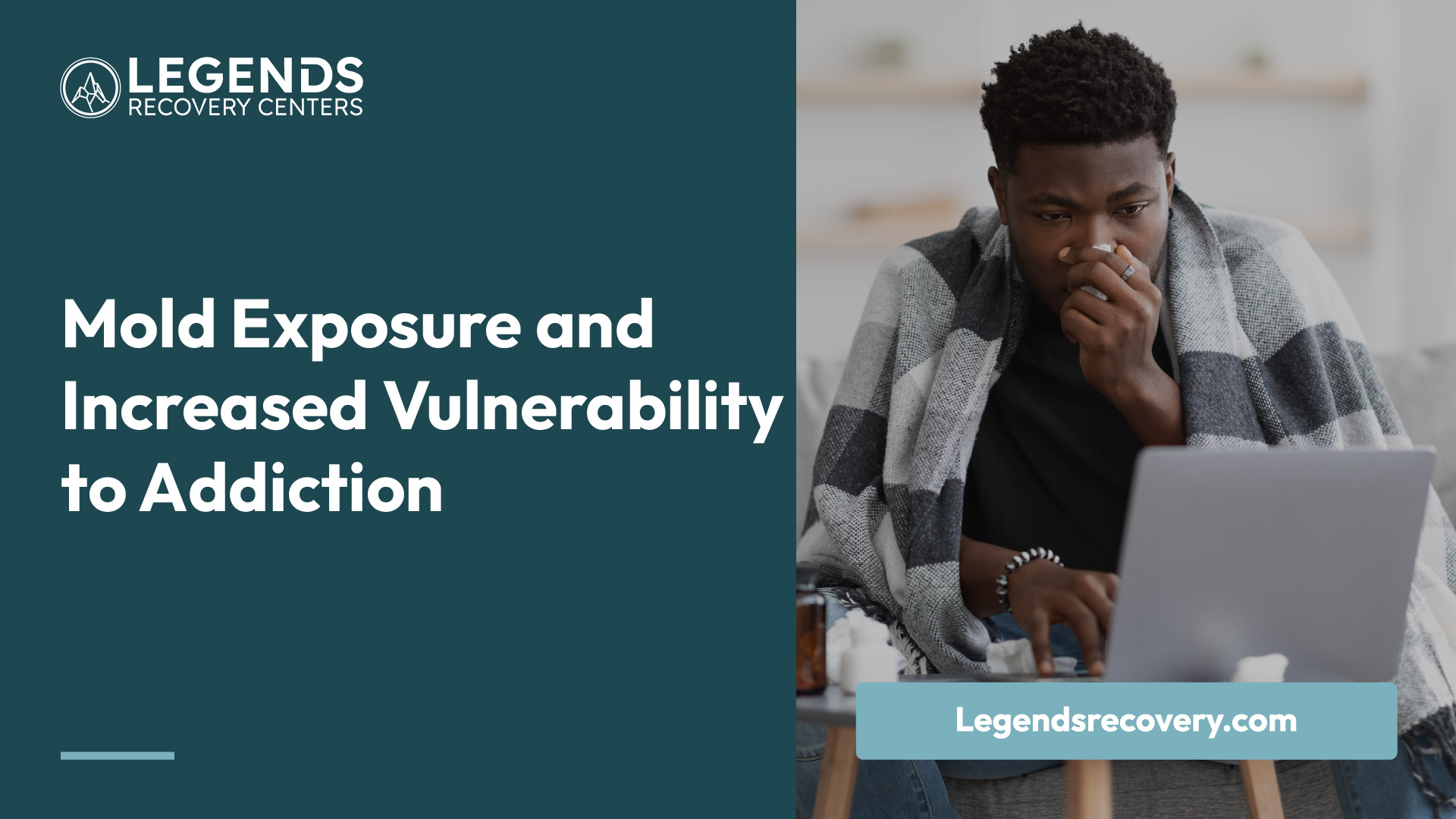Discover the surprising link between mold exposure and drug addiction. Unveiling the hidden connection that fuels substance abuse.


It may come as a surprise, but there is an intriguing connection between mold exposure and drug addiction. While the relationship between these two may seem unlikely at first, emerging research suggests that mold exposure can contribute to the development and exacerbation of addictive behaviors.
Mold exposure occurs when individuals come into contact with mold spores in their environment, often due to the presence of dampness or water damage. Mold can grow in various areas of a home, such as bathrooms, basements, and areas with poor ventilation. When mold is present, it releases tiny spores into the air, which can be inhaled or come into contact with the skin.

So, how does mold exposure relate to drug addiction? The key lies in the impact of mold on the body and brain. Mold contains toxic substances called mycotoxins, which can have detrimental effects on human health. When individuals are exposed to mold and its mycotoxins, it can lead to a range of physical and psychological symptoms.
Research suggests that mold exposure can affect the brain's reward system and neurotransmitter activity, particularly dopamine, which plays a crucial role in addiction. The presence of mycotoxins can disrupt the normal functioning of the brain, leading to imbalances that contribute to addictive behaviors.
Furthermore, mold exposure has been linked to an increased vulnerability to addiction. The stress and discomfort caused by mold-related health issues can lead individuals to seek relief through substances or behaviors that provide temporary comfort or escape. This can set the stage for the development of addiction, as individuals may turn to drugs or alcohol as a means of self-medication or coping.
It's important to note that mold exposure does not directly cause addiction. Instead, it can act as a contributing factor, exacerbating existing addictive behaviors or increasing the risk of substance abuse. Understanding this connection is crucial for both individuals struggling with addiction and healthcare professionals working in the field.
In the following sections, we will explore in more detail how mold exposure affects the brain and mental health, as well as its role in substance abuse. We will also discuss the importance of recognizing the signs of mold exposure and addiction, and the available treatment approaches. Additionally, we will provide strategies for preventing mold exposure and promoting recovery.
Exposure to mold can have a significant impact on various aspects of our health, including the brain. Understanding how mold exposure affects the brain is crucial in comprehending the unexpected connection between mold exposure and drug addiction.
When mold spores are inhaled or come into contact with our bodies, they can release harmful substances called mycotoxins. These mycotoxins have the potential to disrupt normal brain function. Mycotoxins can cross the blood-brain barrier, a protective barrier that regulates the exchange of substances between the bloodstream and the brain. Once in the brain, mycotoxins can interfere with neurotransmitter production and communication, leading to changes in mood, cognition, and behavior.
Additionally, mold exposure can trigger an inflammatory response in the brain. Inflammation in the brain can disrupt neural pathways and impair cognitive function. It can also contribute to the development of mental health disorders, such as anxiety and depression, which are often linked to substance abuse.
The neurological effects of mold exposure can manifest in various ways. Some individuals may experience cognitive impairments, including difficulties with memory, concentration, and problem-solving. Others may notice changes in mood and behavior, such as increased irritability, depression, or anxiety.
Furthermore, mold exposure has been associated with an increased risk of developing neurological conditions. These conditions can range from mild to severe and may include conditions such as migraines, chronic fatigue syndrome, and fibromyalgia. It's important to note that while mold exposure can contribute to the development of these conditions, it is not the sole cause.
Understanding the effects of mold exposure on the brain provides insights into the connection between mold exposure and drug addiction. The impact of mold on mental health and neurological function can lead individuals to seek relief or self-medicate through substance abuse.
In the following section, we will explore the specific ways in which mold exposure can increase an individual's vulnerability to addiction and contribute to substance abuse.
Exposure to mold can have a significant impact on an individual's mental health, increasing their vulnerability to addiction and potentially leading to mold-induced mental health disorders.
Mold exposure can increase an individual's susceptibility to addiction. When exposed to mold, certain biological changes occur in the brain that can disrupt its normal functioning. Mold produces toxic substances called mycotoxins, which can have neurotoxic effects. These mycotoxins can impair cognitive function, alter mood regulation, and affect decision-making processes, making individuals more susceptible to developing addictive behaviors.
Furthermore, mold exposure can also lead to physical discomfort and chronic health issues, such as respiratory problems and fatigue. These physical symptoms can contribute to emotional distress and may drive individuals to seek relief through addictive substances or behaviors.
In addition to increasing vulnerability to addiction, mold exposure can also contribute to the development of mold-induced mental health disorders. The presence of mold in indoor environments has been associated with a variety of psychiatric symptoms and disorders, including anxiety, depression, and even psychosis.
Mycotoxins released by mold can directly affect neurotransmitter function in the brain, which can disrupt the delicate balance of chemicals responsible for regulating mood and cognition. As a result, individuals exposed to mold may experience symptoms such as irritability, mood swings, difficulty concentrating, and memory problems. These mental health issues can further exacerbate the risk of substance abuse and addiction.
Recognizing the impact of mold exposure on mental health is crucial for effective treatment and recovery. Integrated treatment approaches that address both the physical and psychological aspects of mold exposure and addiction are often recommended.
Understanding the impact of mold on mental health is an essential step in addressing the unique challenges faced by individuals who have been exposed to mold and are struggling with addiction. By recognizing the connection between mold exposure, mental health, and addiction, individuals can seek appropriate help and treatment to address both the underlying mold-related health issues and the addictive behaviors.
The relationship between mold exposure and substance abuse is a complex and often overlooked connection. Mold, a common household toxin, can have a significant impact on a person's physical and mental well-being, potentially leading to an increased vulnerability to addiction. In this section, we will explore how mold can act as a trigger for substance abuse and the self-medication and coping mechanisms that may arise as a result.
Exposure to mold can be a triggering factor for individuals susceptible to substance abuse. Mold toxicity can lead to a range of physical symptoms such as headaches, fatigue, respiratory issues, and allergic reactions. These symptoms can be distressing and uncomfortable, prompting individuals to seek relief through various means. Unfortunately, some may turn to drugs or alcohol as a way to self-medicate and alleviate their discomfort.
The link between mold exposure and substance abuse is not limited to physical symptoms alone. Mold-related health issues, including cognitive impairment, mood disorders, and neurological symptoms, can also contribute to an increased risk of developing addictive behaviors. It is important to note that while mold exposure may act as a trigger, it does not directly cause substance abuse. The underlying factors and personal vulnerabilities of an individual play a significant role in the development of addiction.
Individuals exposed to mold may resort to self-medication as a means of coping with the physical and psychological effects of mold toxicity. The discomfort and distress caused by mold-related health issues can lead to feelings of anxiety, depression, and general malaise. In an attempt to alleviate these symptoms and regain a sense of normalcy, individuals may turn to drugs or alcohol as a temporary escape or coping mechanism.
Self-medication can provide a temporary relief from mold-related symptoms, as drugs and alcohol may temporarily mask physical discomfort or provide a sense of emotional relief. However, this reliance on substances as a coping mechanism can quickly spiral into addictive behaviors, exacerbating the individual's overall well-being and potentially leading to a substance use disorder.
It is crucial to recognize the potential link between mold exposure and substance abuse and to seek appropriate help and treatment for both issues. Integrated treatment approaches that address mold-related health issues, addiction recovery, and mental health can provide individuals with the comprehensive support they need. If you suspect mold exposure is affecting your health or contributing to addictive behaviors, it is essential to consult with medical professionals who specialize in mold-related health issues and addiction.
By understanding the connection between mold exposure and substance abuse, individuals can seek the necessary help and support to address both their mold-related health issues and addiction. It is important to remember that recovery is possible, and with the appropriate treatment and resources, individuals can regain control of their health and well-being.
When it comes to addressing the connection between mold exposure and addiction, seeking help and treatment is crucial. Recognizing the signs of mold exposure and addiction and implementing integrated treatment approaches are essential steps towards recovery.
Recognizing the signs of mold exposure and addiction is the first step towards seeking help and finding appropriate treatment. It's important to be aware of the following indicators:
If you or someone you know exhibits signs of mold exposure and addiction, it's crucial to seek professional help and support to address both issues effectively.
Addressing both mold exposure and addiction requires an integrated treatment approach that considers the complex interplay between physical and psychological factors. Integrated treatment involves a comprehensive and holistic approach to ensure the best possible outcomes for individuals facing these challenges.
By combining medical treatment, addiction therapy, and environmental remediation, an integrated approach provides a comprehensive solution to address both mold exposure and addiction. Seeking professional assistance from healthcare providers, addiction specialists, and mold remediation experts is crucial for developing an individualized treatment plan that meets the unique needs of each person.
Remember, recovery is possible with the right support, treatment, and a commitment to overall wellness.

When it comes to addressing the connection between mold exposure and drug addiction, it is crucial to focus on both prevention and recovery. By implementing strategies for mold prevention and remediation, as well as supporting overall recovery and wellness, individuals can take proactive steps towards a healthier environment and a successful recovery journey.
Preventing mold growth is essential in minimizing the risks associated with mold exposure and its potential impact on addiction. Here are some effective strategies for mold prevention and remediation:
If you suspect mold in your environment, it is essential to address it promptly. Consult with professionals specializing in mold remediation to ensure thorough and safe removal.
Recovery from addiction requires a holistic approach that takes into account both physical and mental well-being. In the context of mold exposure and addiction, it is crucial to support recovery and wellness by focusing on the following aspects:
By implementing strategies for mold prevention, addressing mold issues promptly, and taking steps to support overall recovery and wellness, individuals can navigate the challenging connection between mold exposure and addiction more effectively. Remember, seeking professional help is crucial in addressing both mold-related health issues and addiction.
Cleveland Clinic: Mold Exposure
National Institute on Drug Abuse: What is drug addiction?
Union Restoration: Mold and Addiction - Is there a Connection?